The camera allows to immortalize different moments of life. in the UK, a camera is sold every 20 seconds. Reflex, compact, hybrid or instant, it's all a question of grip and image quality. But which model to choose among the multitude of offers and brands (Sony, Panasonic, Nikon...)? To find out, read our guide to the best cameras.
Here is our commitment, to make sure that we provide the best user experience and content quality:
You can support us by using our links to make your purchases (at no extra cost to you)! This sometimes earns us a commission which allows us to remain independent. More about us
Our selection
"Allowing for great photos and 4K video, the Canon EOS M50 is more manageable and lighter than an SLR. Perfect for travel, it comes with…"
"The Sony DSCHX60B is a great value if you're looking for a simple, inexpensive camera that can take great pictures, has expanded connectivity and a…"
"The Nikon D780 replaces the D750, one of the most complete digital SLRs ever created. Still built around the 24.5MP sensor and an AF 51…"
"The original Polaroid OneStep was one of the best selling cameras of the 1970s. Polaroid has brought it up to date and renamed it OneStep+.…"

Allowing for great photos and 4K video, the Canon EOS M50 is more manageable and lighter than an SLR. Perfect for travel, it comes with an excellent EF-M 15-45mm f/3.5-6.3 lens.
620 £ on AmazonWant to travel light and still shoot with a camera that's flexible enough for any conditions? Also want to shoot 4K video? Try the Canon EOS M50. Comes with an EF-M 15-45mm f/3.5-6.3 lens, this camera incorporates the latest innovations in the hybrid camera segment. Both simple and powerful, its big strength lies in its lightness.
Sure, it's not the best camera of all time. But it does wonderfully what we ask of it, and even much more in some cases. Indeed, it is difficult to make more complete than its panel of features. The touch screen and the automatic viewfinder are worth the detour. Benefiting from a complete connectivity, this camera is pleasant in automatic mode. However, it is much less so in manual mode.
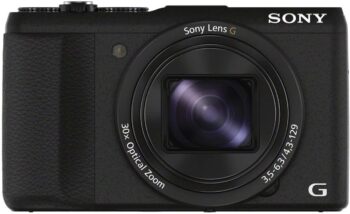
The Sony DSCHX60B is a great value if you're looking for a simple, inexpensive camera that can take great pictures, has expanded connectivity and a decent range of creative options.
183 £ on AmazonThe compact camera offers something that even the best photo smartphones don't have: a quality optical zoom. This makes it interesting for those who go on vacation or are looking for something a little more flexible than a smartphone, hybrid DPP or SLR. In this regard, note the quality of the 30x optical zoom of the Sony DSCHX60B, one of the most impressive on the market today.
Next to this optical zoom lens, there is a 20.4MP Exmor R CMOS sensor. Sony's Exmor sensors are backlit, known for their incredible low-light performance. What should also improve the camera's performance in various shooting conditions is Sony's latest generation Bionz X processor.

The Nikon D780 replaces the D750, one of the most complete digital SLRs ever created. Still built around the 24.5MP sensor and an AF 51 system, this one is even more powerful!
2 159 £ on AmazonThe Nikon D780 is a well-built SLR camera with impressive weather resistance and intuitive handling. We regret the somewhat boxy design, but that is anecdotal. Indeed, the D780 uses a BSI CMOS sensor and a focusing system that combines DSLR and mirrorless technology. When shooting through the viewfinder and the 51-point Multi-CAM 3500FX II autofocus system are identical to the D750, except for the "improved algorithms".
This model is designed for both stills and video. By today's standards, its 24.5MP resolution is about the basic specification for a full frame camera, but it promises a high level of detail combined with better high ISO performance than you'd expect from a very high resolution camera. Good to know, the Nikon D780 cuts costs for avid photographers. Finally, it allows the capture of 4K video that is not cropped and downsampled from 6K data capture.
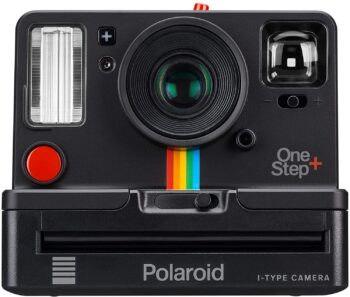
The original Polaroid OneStep was one of the best selling cameras of the 1970s. Polaroid has brought it up to date and renamed it OneStep+. This camera reproduces retro photography brilliantly.
119 £ on AmazonThe Polaroid OneStep+ is the first Polaroid Originals camera that uses Bluetooth wireless technology. This allows it to be associated with the official Polaroid Originals application. In doing so, this instant camera gives access to 6 new features, including remote shutter release, double exposure, light painting light paintinga self-timer, a manual mode and a shutter noise.
The Polaroid OneStep+ is also said to offer for the first time a portrait lens with a minimum focusing distance of 89mm. The traditional lens offering a focal length of up to 103mm. The OneStep+ also includes a high-capacity battery that recharges via a micro USB adapter, a built-in flash and a viewfinder.
Any specific needs?
The best high-end hybrid camera
Your guide :
Rate this buying guide :By rating this buying guide, you are helping us to reward our best writers. Thank you!
| TOP OF THE TOP | CHEAP | TOP OF THE LINE | EXCELLENT | |

In accordance with our commitment, this buying guide does not contain any sponsored products. |
 9/10 |
 7/10 |
 9/10 |
 9/10 |
| OUR SELECTION |
Canon EOS M50 + EF-M 15-45mm f/3.5-6.3
|
Sony DSCHX60B
|
Nikon D780
|
Polaroid OneStep+
|
|
Allowing for great photos and 4K video, the Canon EOS M50 is more manageable and lighter than an SLR. Perfect for travel, it comes with an excellent EF-M 15-45mm f/3.5-6.3 lens.
|
The Sony DSCHX60B is a great value if you're looking for a simple, inexpensive camera that can take great pictures, has expanded connectivity and a decent range of creative options.
|
The Nikon D780 replaces the D750, one of the most complete digital SLRs ever created. Still built around the 24.5MP sensor and an AF 51 system, this one is even more powerful!
|
The original Polaroid OneStep was one of the best selling cameras of the 1970s. Polaroid has brought it up to date and renamed it OneStep+. This camera reproduces retro photography brilliantly.
|
|
|
Type
|
Hybrid
|
Compact
|
Reflex
|
Instantaneous
|
|
Lens
|
EF-M 15-45mm f/3.5-6.3
|
Sony G 24-720mm f/3.5-6.3
|
Nikkor AF-S 24-120 f/4 VR
|
89-103 mm
|
|
Sensor
|
CMOS APS-C 24 Mpx
|
CMOS Exmor R 20.4MP
|
24.5MP BSI CMOS
|
-
|
|
Video
|
4K at 25/24p and Full HD at 60p
|
Full HD at 50p
|
4K UHD at 30p and Full HD at 60p
|
-
|
|
Battery life
|
235 frames
|
380 frames
|
2260 views
|
-
|
Help us improve this table:
Report an error, request the addition of a feature to the table, or suggest another product. Thank you for your kindness!
We spend thousands of hours each year studying the major specialized websites, analyzing products of hundreds of brands and reading user feedback to advise you on the best products.
We are a product review company with a single mission: to simplify your buying decisions. Our research and testing helps millions of people every year find the best products for their personal needs and budget.
To support us you can: use our links to make your purchases (which often earns us a small commission), share our articles on social networks, or recommend our site on your blog. Thanks in advance for your support!

Each type of camera is suitable for a particular use. A compact and an instant camera will be perfect for vacations, when you need a small size to facilitate mobility. Moreover, their very simplified settings allow an almost instantaneous use at any time to not miss anything. The hybrid is a compact camera with a large APS-C or full frame sensor and interchangeable lenses.
In general, it is a compact camera that can be immersed in water. We can mention the Nikon Coolpix W150, the Canon Powershot D10, the Panasonic Lumix FT2 and theOlympus Tough TG-6. In most cases, the depth of immersion does not exceed 10 m. The waterproof camera is ideal for family use, especially on vacation.
The format of the waterproof camera allows it to be carried in a bag. Apart from water, the camera is not afraid of sand or dust. Some models can also withstand extreme cold and can be used in the mountains, for skiing or hiking.
Note that there are also waterproof SLRs. Rare, expensive and intended for professionals, this type of camera has the characteristics of a classic SLR but has a body designed to withstand pressure and greater depths than the compacts mentioned above. Otherwise, you can put your SLR in a waterproof bag for diving.
Without counting film cameras or smartphones optimized for photography, there are no less than 5 types of cameras. Here are the advantages and disadvantages of each of them.
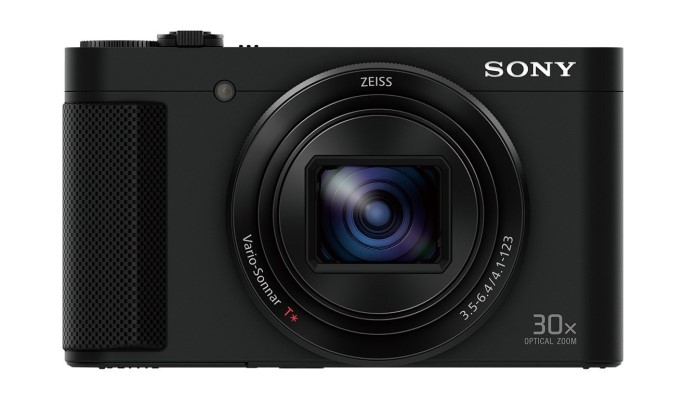
It is by far the most common type of camera and the most sold. Its portable, simplistic and ultra-flat design justifies its popularity with users. The price is also an important argument in favor of the compact camera.
It is a derivative of film cameras, smaller in size with the possibility of using lenses less bulky. The compact camera has an LCD screen on the back, which acts as a viewfinder and a screen for viewing the photos taken. It also has a central shutter built into the lens.
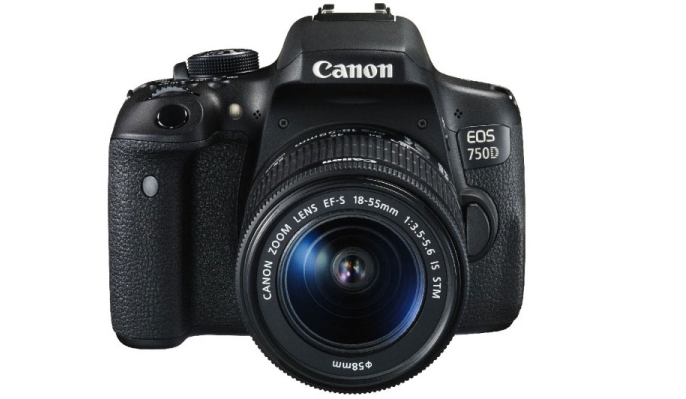
The SLR is the most sophisticated and complex digital camera. It offers all the qualities of a professional camera in the true sense of the word: interchangeable lenses, optical viewfinder, large sensor, prism, LCD screen, stabilizer, possibility of manual adjustment of all parameters, etc.
Its exceptional capabilities and robustness allow the SLR to accomplish great things. Even in the worst conditions such as low light or backlighting, the camera makes an average photographer look like a pro. However, it is expensive and mastering it takes time, even for a seasoned amateur.

The bridge is halfway between the compact and the SLR. It therefore offers the best of both worlds in terms of operation, image quality and price. More bulky than a compact but less than an SLR, it has striking similarities with both types of cameras.
Thus, like the compact, it has an LCD screen on the back for viewing, but it also has an eyepiece viewfinder, which is more practical when it is too sunny. On the other hand, the lens, although of good quality, is not interchangeable.
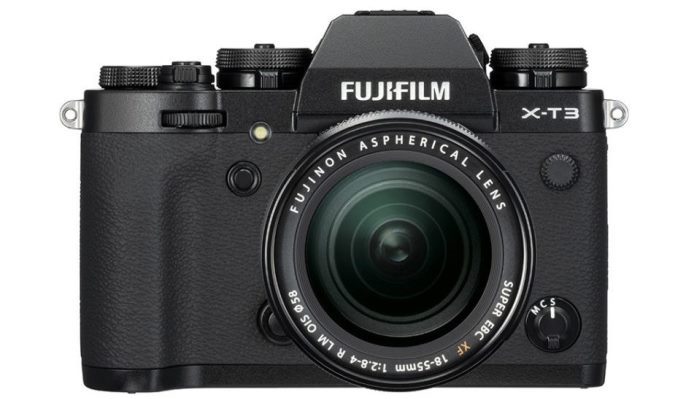
Appeared a few years ago, the hybrid has quickly developed and conquered a significant market share. Concretely, it is a compact camera with a sensor larger than those of classic compacts (APS-C, or even full frame for some). The camera also offers interchangeable lenses.
Similar to SLRs but more discreet and more manageable, hybrids attract many professional photographers. This type of APN also offers better images than bridges and rivals many SLRs.
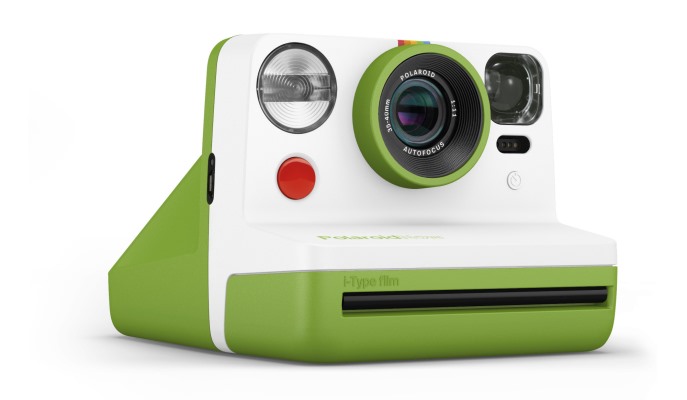
Invented in the 1940s and popularized by the Polaroid brand, the instant camera has improved over the decades, notably with the invention of Polacolor film in 1963. The arrival of digital cameras and their image format signed the decline of instant cameras.
In the last few years, Fujifilm and Polaroid's successors have brought the instant camera back into fashion. Better design and modernized features characterize the new cameras. Instant printing remains the main asset. It avoids going through a long development process.
This is the name given to any film camera. Unlike digital cameras, the silver photo is obtained through a photochemical process that begins with the exposure of a film sensitive to light. This is followed by the development of the photo and an eventual print on paper. Despite the domination of digital cameras, the silver process is still very much appreciated by purists and lovers of vintage photos.
Some smartphones offer exceptional photographic renderings, like the Mi Note 10 and its 108MP sensor. Moreover, 90% of current photos (selfies, souvenirs ...) are taken with a smartphone. In addition, the mobile enjoys a contained price.
The main advantage of the smartphone is that you always have it with you to read emails, connect to social networks, make calls and... take pictures. As soon as an opportunity arises, you take it out and take a picture that is directly shared, transferred or published. In short, a super practical device in an increasingly connected world.
However, no smartphone is equipped with an optical zoom. This type of device is limited to digital zoom, which is not yet perfect in terms of image magnification. In addition, the smartphone suffers from poor quality photos in low light, despite the many filters and software treatments used.
Finally, the smartphone's compactness and flat shape limit its potential. It's impossible to properly capture a moving subject due to a slower shutter speed. And the burst mode does not exist on a smartphone, nor the image stabilizer to avoid blurred shots.
Bigger and thicker than smartphones, DPPs offer a better grip when shooting in the wild. DSLRs and some hybrids have a grip and a 5-axis stabilizer. The latter is a sure-fire way to make sure you never miss a shot, even when you're capturing a moving subject.
Interchangeable lenses are the other major advantage of digital cameras. Compared to clip-on lenses for smartphones, it's literally night and day. Plus, some cameras have an electronic viewfinder that does all the framing work for you. For the purists and knowledgeable amateurs, DSLRs have optical viewfinders.
When you need to isolate a subject, mechanically, the large size of the sensor means that the depth of field is shorter and the background blur is more important. This allows the subject to stand out perfectly. The ISO sensitivity is also a huge plus in low light. And the RAW format has been optimized for software editing.
However, not all cameras are on the same level. A high-end smartphone is still better than a compact or instant camera. Add to that the price of high-end DSLRs and limited connectivity. And don't forget the space requirement. You can't fit a hybrid or DSLR in your pocket!
For quickly taking, posting and sharing photos online, the smartphone is unbeatable. But if you develop the photos from your mobile phone to keep them in an album, you'll see that they're not very sharp.
In addition to album photos, the camera promotes the artistic side of photography, whether you are an amateur or a professional. Construction and industrial workers as well as investigators also use APNs for usable shots.

The camera has become a very sophisticated piece of equipment with state-of-the-art features. It must be said that it has many advantages:
A camera is first and foremost an artistic tool in its own right. Thanks to the many technologies and features associated with it, this equipment helps the user to give free rein to his imagination. For example, he can vary the framing, adjust the contrast, set the resolution and brightness.
Apart from these functions, the camera also offers the flexibility of editing software to ensure that your photos always look good. And with the built-in creative modes, it's now possible to have flawless images, even in extreme shooting conditions (low light, moving subjects, etc.).
With the new forms of storage developed since the 1980s, cameras offer perfect control of the pictures. You can keep the images you have taken without printing them, or make as many prints as you want without losing the negatives.
Moreover, the shots remain safe from chemical reactions or other forms of deterioration, which guarantees the durability of the photos. Thus, you can find your pictures 20 years later, as if they had just been taken.
The new generation cameras do not require any special technical skills. The significant improvements made by manufacturers, with the appearance of simplified models such as compacts or hybrids, have contributed to the democratization of photography, long reserved for professionals.
There is no need to run to a retailer to buy film or wait for shots to be developed in the lab. Everything is available immediately, not to mention the connectivity that allows you to transfer images to a computer, post them on social networks or make prints from a printer.
In addition, beyond the technical aspect, cameras have undergone an unprecedented ergonomic revolution, with new ultra-portable designs that break with the imposing and overly "professional" structure of the models of yesteryear.
Cameras are constantly changing. Manufacturers compete with each other to put on the market state-of-the-art cameras with a wide range of possibilities. There are highly sophisticated models that can be controlled remotely from a smartphone.
There are also numerous shooting modes that broaden the field of creativity for photographers, whether professionals or amateurs. In addition, some cameras, such as high-end SLRs, have highly developed video modes and are often used to shoot clips and short films in HD or even 4K.
Once reserved for the wealthy photographers, cameras have become much more accessible in recent years with the diversification of models. There is something for every budget, as this equipment is now a must-have in the home, just like a television set or a refrigerator.
Whether you want to capture family reunions or holiday memories, you can find the right camera at a very reasonable price.
Of all the accessories, the strap is probably the most important. It allows you to attach the camera to your neck to prevent theft and accidental drops. The carrying bag is also a must for storing the camera, batteries and lenses. The tripod is also useful to keep the camera perfectly stable in all circumstances. Let's not forget the spare battery, charger, lens cap, SD card and dive bag.
In our opinion, the best brands of cameras in 2022 are :
The Japanese brand is simply unavoidable photography. Lenses, SLRs, hybrids or compacts, Nikon knows how to do everything and does it very well. The best possible choice if you are looking for quality at any price.
Another giant of the sector, Canon is the main rival of Nikon. The Japanese manufacturer stands out for its cameras, which are always at the cutting edge of technology. Its EOS range is known worldwide for its quality.
"Technology is the key word, it's what makes Sony strong," says CEO Kenichiro Yoshida. It's hard to argue with that, given that the Japanese giant invented the Walkman, the CD, the PlayStation and contributed to the rise of digital cameras.
More discreet than other Japanese brands, Fujifilm is an undeniable reference for instant cameras. Its cheap compacts and high-end hybrids XT-3 and XT-4 are also worth a look.
Panasonic is a large Japanese company specialized in consumer and professional electronics. Many consider its Lumix compact experts to be the best in their class.
The diagram below will help you to get an idea of the typical prices for each price range (entry-level, mid-range and high-end).
However, more expensive does not necessarily mean better.
We therefore advise you to always consult our ranking before deciding, rather than blindly relying on price ranges.
Clean your camera's sensor
Very sensitive to dust, the sensor of your camera must be cleaned regularly. First turn off the camera, then remove the lens and you will see the translucent mirror. Use a rubber blower to remove the dust from the mirror. Then, lift the mirror up without touching its surface to reach the sensor, and run the blower over it as well.
Take care of your goals
Lenses are important parts of your photography equipment. Therefore, you should maintain them carefully. For example, never forget to replace the caps on your lenses. Also make sure you always store them in a protective sleeve. To clean the glass, use a blower to remove dust, and a microfiber cloth for fingerprints.
Place silica gel packets in your carry-on bag
If you are in an environment that is too humid or if there is a sudden change in temperature, it is possible that condensation will form in your carrying bag and cause the metal parts inside your camera body to oxidize. To remedy this, consider placing silica gel packets in the bag to absorb the moisture.
Replace the lens only when the camera is turned off
It is strongly recommended that you turn off the camera before performing a lens replacement. This is because when the camera is turned off, the static charge is reduced and there is less chance of attracting dust. Also, make sure to change the lens only in a dry and low-dust environment.
Use aluminum foil to get a bokeh effect
Who doesn't dream of taking pictures like a pro and getting a bokeh effect? Here's a simple trick to get there. Take some aluminum foil and crumple it up. Then re-spread it and attach it to a stand to make a backdrop. Then, direct a light on it. All you have to do is take your picture, playing with your different lenses.
The best camera depends on your needs and your budget. Read our buying guide to find out more.
On the market, you'll find compact, SLR, bridge, hybrid, instant, film and waterproof cameras. Read our guide to their advantages and disadvantages.
It all depends on the intended use and your means. These 2 criteria will condition the image quality, the sensor, the lens, the screen, the modes, the sensitivity, the size and more.
The price changes depending on the type of camera you want. SLRs are the most expensive, followed by hybrids, bridges, compacts and snapshots. Expect to pay between €50 and over €4,000 depending on the model.
The method varies from model to model. However, there are 3 ways to restore your camera to factory settings: use the reset button, go to the menu and access the reset option, or perform a manual reset. The latter is specific to models designed before the year 2000 that do not have a reset button or option. During the process, avoid turning off your camera.
Every month we help more than 1 000 000 people buy better and smarter.
Copyright © 2022 - Made with ♥ by buyingbetter.co.uk
Your reviews and buying guides 0% advertising, 100% independent!